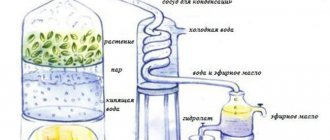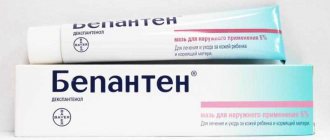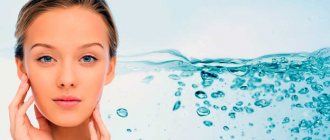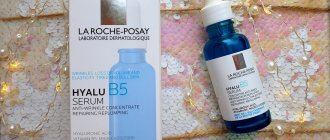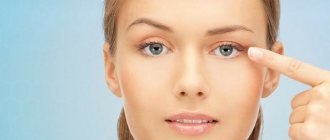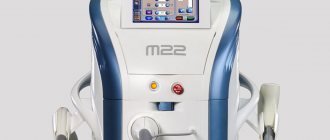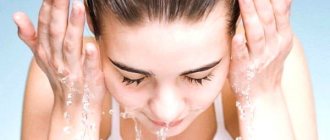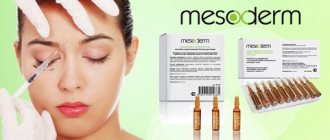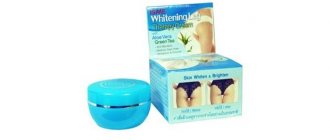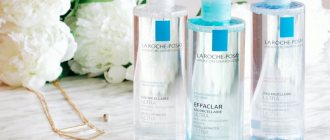What is the function of alcohol in cosmetic products?
Alcohol can be used as:
- solvent
(dissolves hydrophobic ingredients or dilutes the mixture); - emulsifier
(allows you to mix two different substances); - antiseptic
(kills bacteria); - buffer
(balances pH); - stabilizer
(prevents separation or unwanted reactions); - preservative
(minimizes bacterial growth or spoilage); - penetration enhancer
(improves delivery of the ingredient into the skin); - aroma fixative.
Thus, alcohol is a versatile ingredient that can perform a number of functions.
Types of alcohol in cosmetics
In chemistry, an "alcohol" is a complex molecule that has one or more hydroxyl groups - -OH tails attached. The properties of alcohol depend on the amount of these same -OH and on the main molecule to which they are attached.
There are 3 main types of alcohol that are most often used in cosmetics:
- Simple alcohols
- Aromatic alcohols
- Fatty alcohols
Let's take a closer look at each type and find out where the enemy is for the skin and where it is a friend.
Chemical structure of matter
Having found out what the translation of the phrase Alcohol Denat is, the chemical nature of this component becomes clearer. The name translates as “denatured alcohol.” Accordingly, Alcohol Denat in cosmetics for the face and other parts of the body is ethyl alcohol that has undergone a certain purification.
The molecule of the purified substance has the same components as the original: hydrogen and oxygen, connected by certain bonds. It is a monohydric alcohol with a small molecular weight.
Simple alcohols
Simple alcohols are mainly used as an antiseptic to give the product antibacterial properties. They are obtained by fermenting sugar, starches and other carbohydrates. Such alcohols often resemble water in consistency.
Here are some examples of simple alcohols:
- Methanol
_ - Ethanol
(= ethyl alcohol)/Ethanol (= Ethyl Alcohol); - Alcohol
(Isopropanol); - Denatured alcohol
(= SD alcohol or alcohol denat)/Alcohol Denat
Manufacturers like to use this type of alcohol in skin care for several reasons:
- They act as "solvents"
in the formula, whereby alcohols help all the other ingredients, especially those that do not normally dissolve in water, mix well so that the final product is a homogeneous cream or liquid. - Tightening agents:
Some products, such as toners and cleansers, contain alcohols to achieve a short-term effect of reducing pore size and skin tightness. - Improved absorption:
Alcohols help the skin absorb other ingredients better, which is why manufacturers prefer to add them to moisturizers to facilitate the penetration of ingredients (the effect is achieved by breaking down the outer layer of the skin, which in turn makes it easier for products like retinol and vitamin C to penetrate - bad -bad bad). - Preservatives:
Alcohols have antiseptic properties, so they are sometimes used as a preservative in cosmetic products.
In any case, this is all considered to be a very controversial practice for long-term use of such products. Why and what is wrong with simple alcohols?
Here's what simple alcohols do to your skin:
- Dry and irritate.
They strip away the skin's natural acid mantle, dehydrating cells and potentially increasing the chance of fine lines and wrinkles. Ethanol use has been associated with skin irritation or contact dermatitis. - They disrupt the barrier function.
The skin has a natural barrier that helps lock moisture inside and protect against environmental stress and other damaging elements. Alcohol disrupts this barrier, leaving the skin more vulnerable to irritants, allergens, bacteria and viruses. In a 2003 study, researchers noted that this was true for doctors who used alcohol-based cleansers to disinfect their hands. They found that such antiseptics remove “barrier lipids” (healthy fats on the skin), thereby causing the skin to lose moisture. - Makes acne worse.
Many anti-acne preparations contain alcohol due to its bactericidal and mattifying properties. However, these temporary improvements are not worth the long-term problems. A 2011 study, for example, found that alcohol-based acne medications don't actually improve the problem over time because they cause irritation and dryness, which causes oily skin to produce even more oil in response to the irritant, making acne worse. .
Below are some examples.
Ethanol (= ethyl alcohol)
Rating:
unsatisfactory.
Category:
solvent, preservative, flavor fixer.
How it works:
accelerates the absorption of cream into the skin and easily evaporates from the surface of the skin. It dissolves essential oils well, concentrating their odors and maintaining their durability. For this reason, it is often used in the production of perfumes. In addition, it has antiseptic, disinfectant, and drying properties.
Topically applied ethanol acts as a skin penetration enhancer and may promote transdermal absorption of xenobiotics (eg, carcinogenic contaminants in cosmetic formulations). This type of alcohol (low molecular weight alcohol) dissolves surface oil, thereby instantly drying the skin because it evaporates quickly.
Isopropyl alcohol
Rating:
unsatisfactory.
Category:
solvent, defoamer, preservative, perfume ingredient.
How it works:
in cosmetics it is used as a solvent in wash-off cosmetics. Used in lotions, rinses, aftershave creams. In formulations it can act as a substitute for ethyl alcohol.
Denatured alcohol
Rating:
satisfactory.
Category:
degreasing agent, antiseptic, solvent, defoamer.
How it works:
in cosmetics it is most often used as a solvent in rinse-off cosmetics. Found in shampoos, lotions, rinses, and aftershave creams. In formulations it can act as a substitute for ethyl alcohol. It may be of natural origin, without impurities, then it is safe in acceptable concentrations. You should beware of poorly purified alcohol of technical origin.
Denatured alcohol should not be used alone on the skin, however, when combined with other ingredients and in small quantities, this ingredient is completely safe. In organic cosmetics it is often used as a conductor for delivering active ingredients to the skin.
It is difficult to estimate the exact alcohol content of a product because the percentage concentrations are never indicated on the packaging. However, it is possible to give a rough estimate. The ingredients in the formulation are listed in order from highest to lowest concentration. Most of the product usually consists of the first 6-10 ingredients.
But even if alcohol is included in the top ten, this does not mean that it will dry out the skin. It depends on what else is in the formula. There may be some emollients or fatty ingredients that counteract the drying effect. The best solution is to try the product on your skin. If there is an excess of hard alcohols, you will immediately feel the so-called “cooling effect” - the result of the rapid evaporation of alcohol from the surface of the skin.
The correct recommendation would be to completely avoid products aimed at teenage skin problems that abound on drugstore shelves. They contain large amounts of simple alcohol because they focus on quickly achieving mattification and drying out breakouts and acne, which in the long term leads to skin barrier breakdown and irritation.
Alcohol Denat - what is it?
In the manufacture of cosmetics and perfumes, this component is presented as a degreasing agent, defoaming agent, solvent, and also a substance that effectively inhibits the growth of bacterial flora.
Alcohol Denat is an alcohol derivative. In fact, this is ethyl alcohol, which has certain characteristics. It is worth noting that ethanol (ethyl alcohol) is widely used in drinks, medicines, and fuel. Speaking of cosmetics, it can be found in bath products (gels and foams), in facial care cosmetics, and in products for the oral cavity.
Aromatic alcohols
This type of alcohol performs a similar function to simple alcohol, but has an aroma. It acts as a preservative or as a component of a fragrance or essential oil.
Let's look at them in more detail.
Benzyl Alcohol
Rating:
satisfactory.
Categories:
preservatives.
How does it work:
its main function in cosmetics is preservative. It is an organic alcohol that occurs naturally in some fruits (apricots, cranberries) and teas. High benzyl alcohol content can impart a noticeable floral aroma to cosmetic products, as it is part of the aroma composition of some essential oils, such as jasmine.
In large quantities, benzyl alcohol can cause serious irritation, but in minimal quantities in cosmetics it is generally considered safe.
Cinnamyl alcohol/Cinnamylalcohol
Rating:
unsatisfactory.
Categories:
flavoring
How does it work:
This volatile fragrance containing cinnamon and balsam of Peru extracts can significantly dry out the skin.
Why do you need Alcohol Denat?
So, Alcohol Denat in cosmetics - what is it? This substance performs a number of functions:
- Binding of useful substances in the composition of a cosmetic product and transferring them to the place of use.
- Extraction of beneficial substances from herbs and flowers.
- Is a good preservative.
Only certain types of denatured alcohol are approved for use in the production of health and beauty products. Conscientious manufacturers indicate it in the composition with the prefix SD and a numerical and alphabetic designation, which indicates the origin of the substance and purity. For example, the prefix SD (Specially Denaturated) and encodings like “23-A” can be added to the list. For SD Alcohol Denat, the Russian translation sounds like specially denatured alcohol. It is used to comply with the production technology of exactly the product in which it is found.
Fatty alcohols
And now we get to the most interesting part. There is a whole class of substances that are “alcohols” in their chemical essence, but they differ in their appearance and effect on the skin.
Fatty alcohols are non-drying and have emollient and occlusive properties (slowing down the evaporation of water). Unlike simple alcohols, they have a thick, waxy texture. Some of them are even in a solid state of aggregation.
Fatty alcohols are used to give products a soft, velvety feel and glide on the skin more pleasantly.
Here are some examples:
- Behenyl Alcohol
- Caprylic Alcohol
- Cetearyl Alcohol
- Cetyl Alcohol
- Decyl alcohol
- Lauryl Alcohol
- Myristyl Alcohol
- Stearyl Alcohol
- Isostearyl Alcohol
- Oleyl Alcohol
Used as:
- Emulsifiers.
These alcohols help mix water with oils to create nice, smooth creams and lotions. - Emollients.
Because these ingredients have natural moisturizing properties, they are included in many creams and lotions. - Thickeners.
Consumers love thick, rich creams, especially for winter products. Fatty alcohols help thicken the formula to the correct consistency.
There is only one small complaint about some fatty alcohols - they can cause an irritation reaction in sensitive skin. In particular, coco- and lauryl glycosides, which are mixtures of fatty alcohols and glucose. But this is only a small exception.
Examples of safe and effective fatty alcohols include:
Stearyl alcohol
Rating:
satisfactory.
Category:
thickener/emulsifier, emollient.
How does it work:
The fatty alcohol is used as an emollient and helps preserve other ingredients in the formulation.
Stearyl Stearate
Rating:
satisfactory.
Categories:
emollient, product texture improver.
How does it work:
It is a plant wax made from natural fatty acids combined with synthetic fatty alcohols. Functions as an emollient, occlusive agent to moisturize the skin.
Lauril Laurat
Rating:
best.
Categories:
emollient, product texture improver.
How does it work:
is an emollient ingredient that can help bioactive ingredients integrate better into the surface of the skin (a gentler version of penetration enhancers). It is considered safe for use in cosmetics.
By the way, many ingredients we are familiar with are actually alcohols too.
Panthenol
Rating:
best.
Categories:
vitamins.
How does it work:
is the alcohol form of pantothenic acid. Sometimes called provitamin B5, panthenol mixes easily with many different types of ingredients, making it a versatile skin-appearing ingredient. Panthenol is used in skin care products as a humectant due to its ability to attract and retain moisture.
Glycerol
Rating:
best.
Categories:
emulsifier, solvent, actives.
How does it work:
is the simplest representative of trihydric alcohols. Moisturizes the skin.
Phytosphingosine
Rating:
best.
Category:
preservatives, nutrition and skin restoration.
How does it work:
has restorative properties and is suitable for weakened skin.
Method of obtaining
Alcohol is produced through fermentation. The microflora living in the substrate converts organic substances into alcohol compounds during their life processes. Plant material is used as a nutrient medium - grain crops, potatoes, cane. On an industrial scale, ethanol is produced by chemical synthesis through hydration.
When converting alcohol, a denaturing agent is added to the solution, which gives the product a bitter taste. And this is perhaps the only organoleptic difference between denatured alcohol and ethanol.
It is worth noting the fact about the Alcohol Denat component that it is a permitted substance in perfumery as well as in the production of cosmetics. Most products use exclusively rectified alcohol from food grade raw materials. Thus, it has nothing in common with the denatured alcohol known in the post-Soviet space, which is of technical origin.
The peculiarity of Alcohol Denat is that it is a substance obtained from food raw materials. As a denaturing agent in perfumery, the substance bitrex is added to ethyl alcohol, which is harmless to the body.
As is known, alcohols are volatile compounds. The denaturation process transforms the spatial bonds in the ethanol molecule, causing its volatility to decrease. In addition, this process is regulated and controlled at the legislative level in a number of countries.
How to use alcohol-containing cleaning and care products?
The basic rules of cleansing include the following:
- You should wash your face no more than 2 times a day – morning and evening;
- in the morning you need to use a cleansing gel or foam, and then a tonic, and in the evening you need to add makeup remover;
- You need to use lukewarm water;
- you need to wash off all makeup removers, including micellar water;
- after washing your face, you need to gently pat it dry with a napkin without stretching the skin;
- The procedure should be completed with the use of a toner to tighten the pores and restore the pH level.
In order not to harm the skin, you need to use cosmetic cleansers correctly:
- The gel must first be applied with the pads of your fingers to the skin from bottom to top along the massage lines, and then beaten in with light tapping;
- The tonic must be applied to the face with a cotton pad, then lightly rubbed in with your fingers;
- The milk should first be applied to the skin with a cotton pad, performing a light massage, and then remove the excess with a napkin when the product is absorbed.
When using lotion, you need to do the following:
- First, the skin should be pre-treated with foam or milk.
- After this, you need to generously moisten a cotton pad with cosmetic.
- Then, with intense movements, you need to cleanse the skin until the dirt is washed away.
- Next, you need to wipe the skin with tonic to nourish it and close the pores.
- At the final step, you need to apply a nourishing cream to the skin.
The cleaning foam must be used as follows:
- First, foam the product in your palms with a small amount of water.
- Then you need to apply the composition to the skin without affecting the area around the eyes.
- Then the foam should be washed off with warm water.
- After this, you need to apply a moisturizer to your skin.
You need to use the scrub according to this method:
- First you need to steam the skin.
- Then, before using the scrub, the skin should be treated with tonic or lotion.
- After this, the scrub should be applied to the skin, without pressing and lightly massaging, for 2-3 minutes.
- Then after about 5 minutes. The product must be washed off with warm water.
- At the final stage, you need to apply a moisturizer to the skin.
